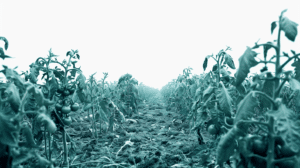Drought frequency and intensity have increased by 29% since 2000 and heatwaves have tripled in frequency since the 1960s. Researchers suggest that the most damaging U.S. hurricanes are three times more frequent than 100 years ago, and that the proportion of major hurricanes (Category 3 or above) in the Atlantic Ocean has doubled since 1980.
Climate change is becoming a significant agricultural challenge, heightening concerns about the variability in yields of agricultural raw materials. This issue is particularly pertinent for food & beverage companies, as the unpredictability of yields is on the rise. The implications of climate change on weather parameters in various growing locations are expected to result in more extreme fluctuations in yields.
Food & beverage companies heavily rely on a stable and predictable supply of agricultural raw materials to meet their production demands. The rising unpredictability in yields poses a significant threat to the continuity and reliability of their supply chains, making it challenging to plan and forecast with accuracy. In addition, this industry often operates with just-in-time inventory practices, where efficient supply chain management is crucial. Any disruptions or fluctuations in the supply of agricultural raw materials can lead to operational challenges, impacting production schedules, and potentially resulting in shortages or production delays.
Moreover, food & beverage companies are often reliant on dispersed and fragmented supply chains. These supply chains involve numerous stakeholders, including farmers, distributors, processors, and retailers, each playing a distinct role in the production and distribution process. They tend to operate independently and may use diverse systems for managing their processes. The challenge intensifies when considering the need to source a wide variety of agricultural raw materials, each with its own set of growing conditions, suppliers, and distribution channels. This diversity leads to a lack of standardization and a fragmented landscape where different parts of the supply chain may not be seamlessly connected.
To address these challenges, food & beverage companies must adopt a proactive approach by implementing comprehensive measures to manage the increasing variability in yields. This involves tracking agronomic data on an extensive scale, covering various commodities, geographies, and seasons. By doing so, companies can gain a holistic understanding of the portfolio-level implications and make informed decisions regarding their sourcing strategies.
Managing the agronomic processes themselves is another crucial step for companies looking to ensure supply stability. This means getting closer to the fields, understanding the nuances of each location, and actively participating in the management of agronomic practices. Timely interventions, such as adjusting the timing of chemical applications and harvests, can help bridge the gaps caused by the unpredictable nature of yield variability.
The importance of agility in sourcing cannot be overstated. food & beverage companies need to be prepared to adapt swiftly to changing conditions, considering alternative locations for sourcing to maintain a stable and reliable agricultural supply chain. This requires a deep understanding of the agronomic factors influencing each location, allowing for strategic adjustments based on real-time data.
The evolving landscape of agriculture calls for a paradigm shift in how food & beverage companies approach agricultural supply chain management. A move towards more connected and data-driven strategies is essential to tackle the challenges posed by climate-induced yield variability. Embracing technology and advanced agronomic data tools becomes crucial in navigating these complexities, enabling enterprises to make informed decisions that go beyond traditional agricultural supply chain models.








